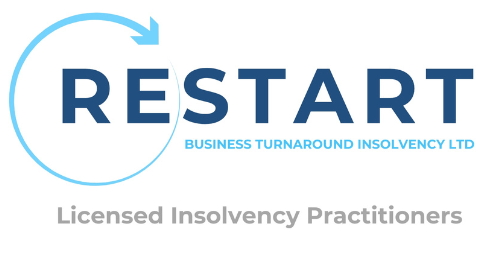
How To Turn Your Business Around: 5 Manageable Steps
If your business is struggling financially and you’re looking for support, you’ve come to the right place. In this blog, our insolvency experts at Restart BTI outline 5 manageable steps to turning your business around, helping your company get back back on track.
So, how do you turn your business around in 5 simple steps? First things first, identify why your business is struggling and work out how you are going to tackle these challenges. The 5 steps to turning your business around include:
- Crisis Management
- Financial Restructuring
- Business Process Improvement
- Talking To Your Creditors
- Reducing Your Overheads
Keep reading to learn more about each step in more detail and to find out how Restart BTI can help.
5 Steps To Turn Your Business Around
First and foremost, it is important to understand that you are not alone. Unfortunately, roughly one-third of all businesses fail within their first two years. 50% collapsed within five years. However, even if you are experiencing some problems now, this doesn’t mean that your business is destined to fail.
If your business is struggling, the best place to start is by fact finding. Once you have worked out what the issues are, you can prepare a plan to fix the problems. Then you must implement the planned courses of action by funding the process and building a strong team to carry it out. Last but not least, you must monitor your progress and make changes when necessary.
Here’s how to turn your business around in 5 manageable steps:
Crisis Management
Whilst this may sound like a very obvious step to take, identifying the key issues within your organisation is key to understanding why it is failing. This involves identifying the key areas of crisis, defining business needs and gathering information about why the business needs are not being met.
A good place to start is to identify a time when your profits were up and sales were strong. Ask yourself: when did things start changing? Once you narrow down the reasons why your business is suffering, you can then focus on how to address the issues head-on.
It’s also vital that you are transparent about what is happening, especially when it comes to communicating with the rest of your team. Open up and invite the team to jump on board in finding revenue or streamlining expenses.
Financial Restructuring
This step involves managing your cash flow by forecasting, restructuring obligations and tightly managing finances. You should be sending out invoices, creating payment reminders, chasing late payments, running credit checks on prospective clients and taking action against late and non-payers. This will help to improve the stream of revenue coming into your business.
Once you’ve determined what you need, it’s important to communicate the situation with investors and the board of directors to assist with funding.
Business Process Improvement
This is where you map out all of your business processes to consolidate systems and duties and to remove waste and redundancies. You need to strip away all of the unnecessary detail and get back to basics. Ask yourself two questions:
- How well do you know your target market?
- What do your customers want?
The more you know about your target market and your ideal customer, the better you’ll understand where to focus your efforts and resources.
Talk To Your Creditors
If you’re struggling to make payments to creditors such as suppliers, finance providers, landlords and HMRC, you may be tempted to ignore them and hope that the situation goes away. Unfortunately, this is never the case and more often than not, it actually makes the situation worse.
If you have payments that you’re struggling to make, the best approach is to talk to your creditors, explain the situation and discuss your plans to repay your debts. If you have a positive relationship with your creditors and have always made payments in the past, they’re likely to be more understanding.
Reduce Your Overheads
If your business is struggling, it’s crucial that you attempt to cut your overheads and eliminate unnecessary spending however you can. Whatever the size of your business, you can always cut costs.
Here are a few steps you can take:
- Make sure all purchases are approved by you and your partners.
- Review all expense claims made by staff personally.
- Ask every supplier for a review of their prices to see if you can get a better deal.
- Cut all overtime costs.
Reasons Why Your Business May Be Struggling
Generally, the leading cause of business failure in the UK is a lack of cash flow, which is responsible for four out of every five company closures. However, there are many more factors that affect small and medium-sized businesses in the UK.
Here is a list of reasons why many businesses struggle:
- Not having enough funds at the start of the business.
- The absence of a well-developed business plan
- Failure to price products and services properly.
- Being overly optimistic about the sales the firm will achieve
- Inability to recognise or accept the weaknesses in the business.
Rescue Your Business With Restart BTI
Here at Restart BTI, we understand how difficult it can be to accept that your business is struggling and seek help from others. As part of our rescue service, we’ll work with business owners and directors to determine if there is a viable means to turn your struggling business around.
If we’re consulted early in the process, we will be able to assist with a restructuring exercise to avoid the need for a formal insolvency process. As Licensed Insolvency Practitioners, we’ll offer advice on rescue options via the use of:
- Administration
- Company Voluntary Agreement
- Partnership Voluntary Agreement
Get in touch with our friendly and knowledgeable team, who are here to help support you throughout this challenging process

Established in 2018, the directors at Restart BTi have over 50 years of experience to assist companies, business owners and individuals with expert advice and tailored solutions when facing financial difficulties.
